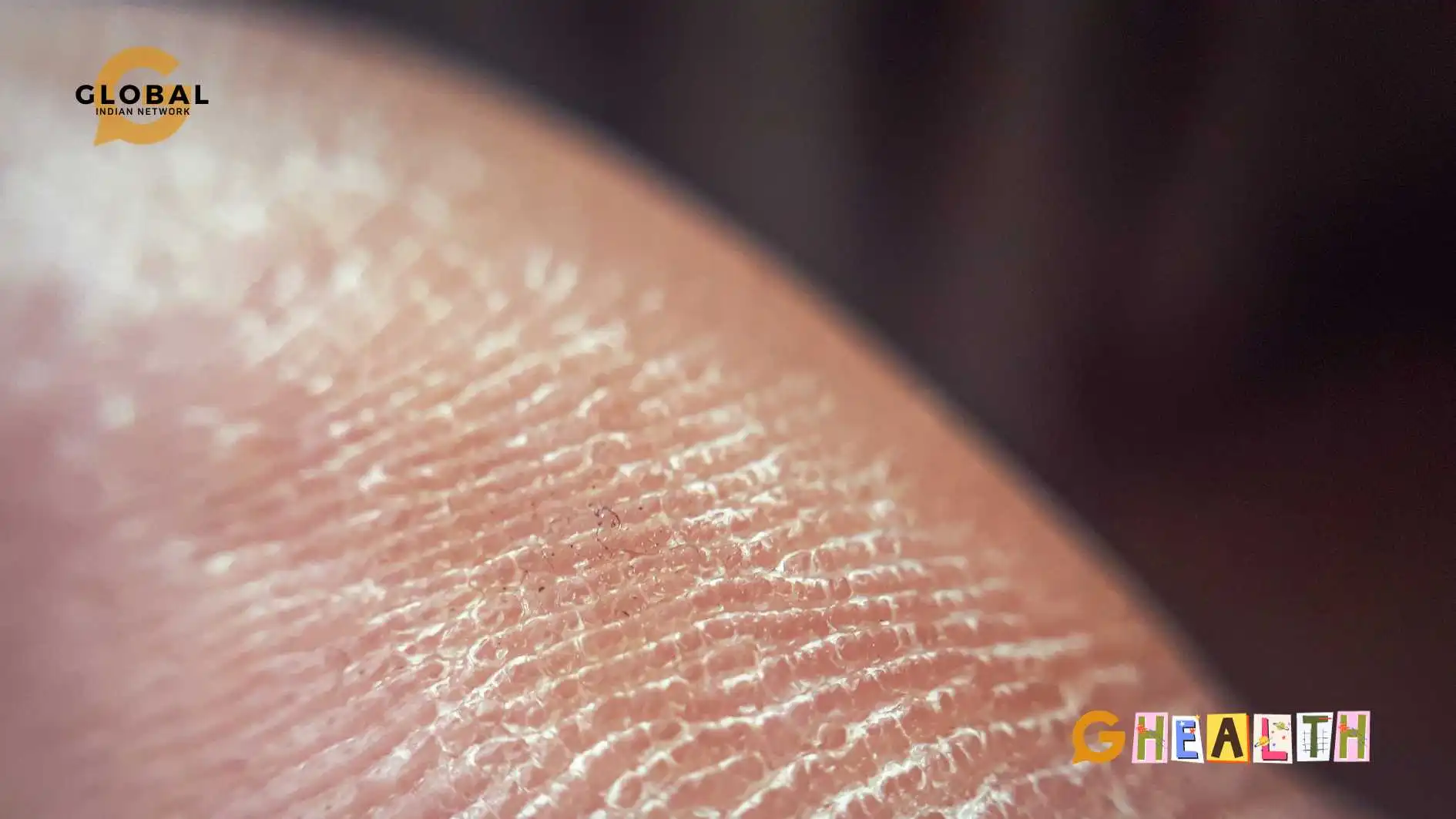Navigating life with type 2 diabetes presents its own set of challenges, and among the often overlooked aspects is the impact it can have on your skin. This article, titled “Type 2 Diabetes Skin Problems: Appearance and Prevention,” offers essential insights into the various skin problems associated with type 2 diabetes, shedding light on their appearance and, more importantly, providing valuable guidance on preventive measures. Understanding these skin issues and taking proactive steps is crucial for maintaining both the health and appearance of your skin while managing diabetes.
Table of Contents
Understanding Type 2 Diabetes
Before we explore the skin issues connected to type 2 diabetes, it’s essential to understand the condition itself. Type 2 diabetes is a condition where the body either resists the effects of insulin or doesn’t produce enough insulin to maintain normal glucose levels. This results in elevated blood sugar levels, leading to various health conditions.
Reasons for Type 2 Diabetes
The primary reasons and risks of type 2 diabetes are:
Insulin Resistance: The body’s cells do not respond effectively to insulin.
Genetics: A family history of diabetes can increase the risk.
Obesity: Excess body weight, especially around the abdomen, is a major risk of diabetes.
Lifestyle Factors: Sedentary lifestyle with less physical activity and poor dietary choices, such as high sugar and low fibre intake.
Age: Risk increases with age, particularly after 45.
Metabolic Syndrome: High blood pressure, high triglycerides, low HDL cholesterol, and obesity can contribute.
The Connection Between Diabetes and Skin Health
The skin, the body’s largest organ, is not immune to the effects of type 2 diabetes. Diabetes can disrupt the normal functioning of the skin, leading to various problems.
Skin problems may be the first visible signs of diabetes, according to the American Diabetes Association (ADA).
In individuals with type 2 diabetes, common types of skin infections include:
Fungal Infections: These can include candidiasis (yeast infections) and dermatophytosis (ringworm).
Bacterial Infections: Staphylococcus infections, folliculitis, carbuncles, and cellulitis are common bacterial skin infections.
Other Skin Issues: Skin problems like dry skin, acanthosis nigricans, diabetic dermopathy, skin discolouration, and necrobiosis lipoidica diabeticorum are also observed.
Fungal Infections and Their Appearance
People with type 2 diabetes are at an increased risk of developing these infections.
Candidiasis (Yeast Infections)
Candida is a type of yeast that can cause infections in warm, moist areas of the body, such as the armpits, groin, and under the breasts. These infections can lead to redness, itching, and a rash-like appearance. In individuals with diabetes, genital yeast infections or vaginal infections are also common.
Dermatophytosis (Ringworm)
Ringworm is a fungal infection that affects the skin, causing itchy, red, ring-shaped diabetes rashes. It can occur on various body parts, including the feet (athlete’s foot), nails (onychomycosis), and the body (tinea corporis).
Causes of Fungal Infections
Elevated Blood Sugar Levels: High blood sugar provides an ideal environment for fungal growth. It can create an imbalance in the body’s natural flora, leading to overgrowth of fungi.
Weakened Immune System: Diabetes can weaken the immune system, making it less effective in fighting off infections, including fungal ones.
Reduced Blood Circulation: Poor circulation associated with diabetes can hinder the body’s ability to deliver immune cells and nutrients to affected areas, making it harder to combat fungal infections.
Prevention and Management of Fungal Infections
People with diabetes can prevent and manage fungal infections, which is essential for maintaining skin health. Here are some tips to help prevent these infections:
Maintain Blood Sugar Control: Keeping your blood sugar levels within a target range is crucial for reducing the risk of fungal infections. Follow your diabetes medication plan as prescribed by your healthcare provider and take insulin therapy.
Practice Good Hygiene: Regularly clean and dry your skin, especially in areas prone to moisture buildup. Use mild soap and water, and make sure to dry yourself after bathing or sweating thoroughly.
Wear Breathable Clothing: Choose breathable fabrics that allow air circulation, which can help prevent the buildup of moisture that fungi thrive in.
Foot Care: Take special care of your feet. Keep them clean and dry, and wear moisture-wicking socks and well-fitting shoes. Check your feet daily for any signs of fungal infections or structural changes that can impact the blood supply and other issues.
Antifungal Medications: If you develop a fungal infection, consult your healthcare provider. They may prescribe antifungal creams, ointments, or oral medications to treat the infection.
Maintain a Healthy Diet: A balanced diet can help support your immune system and overall health, maintain a healthy weight, and reduce the risk of fungal infections.
Regular Skin Inspections: Perform regular skin inspections to identify any potential signs of fungal infections early. If you notice any unusual changes or symptoms, seek medical advice promptly.
Bacterial Infections and Their Appearance
Bacterial infections are another category of skin problems that patients with type 2 diabetes may encounter. Diabetes can compromise the body’s ability to combat bacterial infections effectively, leading to various skin-related issues.
Type 2 diabetes increases the occurrence of infections such as:
Staphylococcus (Staph) Infections
Staphylococcus bacteria can cause skin infections, including boils, impetigo, and cellulitis. These infections are characterized by redness, swelling, and sometimes pus-filled lesions on the skin.
Folliculitis
Folliculitis is an infection of the hair follicles, often causing red, inflamed bumps that can be itchy and painful.
Carbuncles
Carbuncles are deeper and more severe than boils, typically occurring on the back of the neck, shoulders, or thighs. They may cause fever and a general feeling of illness.
Cellulitis
Cellulitis is a bacterial deep infection characterized by red, swollen, and painful areas on the skin. It can spread rapidly and may require immediate medical attention.
Causes of Bacterial Infections
Individuals with type 2 diabetes have a higher susceptibility to bacterial skin infections due to several factors:
Impaired Immune Response: High blood sugar levels in diabetes can weaken the immune system, reducing its ability to fight off bacterial invaders effectively.
Poor Circulation: Diabetes often leads to poor blood circulation, which means fewer white blood cells and nutrients reach the infected areas, making it harder to combat bacterial infections.
Skin Changes: Diabetes can cause changes in the skin, making it more vulnerable to bacterial colonization.
Prevention and Management of Bacterial Infections
Preventing and effectively managing bacterial infections is crucial for individuals with type 2 diabetes. Here are some key strategies:
Maintain Blood Sugar Control: Consistently manage your blood glucose levels within a target range, as recommended by your health care professional. This will help strengthen your immune system and reduce the risk of bacterial infections.
Practice Good Hygiene: Regularly cleanse your skin with mild soap and water. Pay extra attention to areas prone to moisture and friction, such as the armpits, groin, and between moist folds.
Wound Care: Promptly clean and treat any cuts, scratches, or other injuries to prevent bacterial entry. Keep wounds clean, dry, and covered until they heal.
Foot Care: Take special care of your feet, as they are susceptible to bacterial infections. Wash your feet daily, inspect for cuts or sores, and wear well-fitting shoes and moisture-wicking socks.
Avoid Skin Irritants: Limit the use of harsh skin products, which can irritate the skin and increase vulnerability to bacterial infections.
Seek Medical Care: If you notice signs of a bacterial skin infection, such as redness, swelling, warmth, or pus, consult your healthcare provider promptly. Early diagnosis and treatment are crucial.
Antibiotics: If you are diagnosed with a bacterial skin infection, your healthcare provider may prescribe antibiotics to clear the infection. Follow the prescribed treatment plan diligently.
Maintain a Healthy Lifestyle: A balanced diet, regular exercise, and stress management can support your immune system and overall health, reducing the risk of bacterial infections.
Other Skin Problems Associated with Type 2 Diabetes
It’s important to note that the severity and occurrence of these allergic reactions can vary from person to person. Genetics, blood sugar control, and overall health play a role in determining an individual’s susceptibility to these conditions.
Dry Skin: Xerosis is a condition characterized by dry, flaky skin. It is a common complication of type 2 diabetes, affecting up to 50% of people with the condition. Diabetes can reduce the skin’s moisture and disrupt the natural barrier that prevents excessive water loss. This leads to itchy skin, which can be uncomfortable, and sometimes itchy rashes.
Acanthosis Nigricans: Acanthosis nigricans is a skin condition characterized by dark, thickened patches of skin, often appearing in folds and creases. It’s more common in individuals with insulin resistance, which is a hallmark of type 2 diabetes.
Diabetic Dermopathy: Diabetic dermopathy is a skin condition marked by light brown, scaly patches that are usually round or oval. These patches often appear on the shins and can be mistaken for age spots. They are harmless but can be unsightly.
Skin Discoloration: Diabetes can lead to skin discolouration. Dark spots or yellowish, reddish, or brown patches may appear on the skin. Skin tags can also be associated with diabetic patients. This can affect an individual’s appearance and self-esteem.
Digital Sclerosis: The thick, tight, and waxy skin on the back of the hands characterizes digital sclerosis. It can make hand movement difficult and painful.
Necrobiosis Lipoidica Diabeticorum: This condition results in raised, reddish-brown patches, often with a yellowish border. It typically appears on the lower legs and can be associated with itching and discomfort.
Bullosis Diabeticorum: Bullosis diabeticorum is a rare condition where fluid-filled burn blisters form, typically on the hands and feet. These diabetic blisters can be painless and heal slowly, increasing the risk of infection.
Digital Sclerosis: It is a diabetes-related skin condition that is characterized by the thickening and tightness of the skin on the back of the hands. It can make hand movement difficult and painful.
Eruptive Xanthomatosis: People with diabetes may show Eruptive xanthomatosis that involves the development of firm, yellow, pea-sized skin bumps with a red halo associated with high cholesterol levels. These typically appear on the buttocks, elbows, knees, and back.
Causes of Diabetes-Related Skin Problems
Understanding the causes of skin problems in people with type 2 diabetes is crucial to developing effective prevention strategies. Here are some of the primary factors contributing to these skin issues:
High Blood Sugar Levels
Elevated blood glucose levels, a hallmark of type 2 diabetes, can damage blood vessels and nerves over time. These impairments can disrupt the skin’s ability to receive adequate blood flow and nutrients.
Poor Circulation
Diabetes can lead to poor blood flow, reducing the flow of oxygen and nutrients to the skin. This impairs the skin’s ability to heal, making it more susceptible to various problems.
Weakened Immune System
Individuals with diabetes often have compromised immune systems. This is a risk factor that can make it more difficult for the body to fend off infections and heal wounds effectively.
Neuropathy
Diabetic neuropathy is nerve damage that can affect various parts of the body, including the skin, and can also lead to blood vessel damage. It can lead to dry skin, skin ulcers, and other skin problems.
Prevention and Management
Preventing diabetes complications requires a proactive approach. The National Diabetes Statistics Report from the Centers for Disease Control and Prevention reveals that approximately 37.3 million people in the United States, constituting 11.3% of the population, are affected by diabetes. Alarmingly, one out of every four adults with diabetes remains undiagnosed. Moreover, an estimated 96 million American adults live with prediabetes, indicating elevated blood glucose levels that are not yet classified as diabetes.
Here are some essential strategies for maintaining healthy skin:
Blood Sugar Control: Maintaining stable blood glucose control is crucial. Diabetic ketoacidosis (DKA) is a severe complication of diabetes characterized by dangerously high blood sugar levels, acidic blood, and ketone buildup. It can be life-threatening and requires immediate medical attention, typically occurring in Type 1 diabetes but can also affect some with Type 2 diabetes. Adhering to your diabetes management plan, which may include prescription medication, dietary modifications, and regular exercise, is essential.
Regular Skin Care: A simple yet effective way to prevent skin problems is to maintain good hygiene. Clean your skin daily with mild soap and lukewarm water, and avoid taking a hot bath. Pat your skin dry instead of rubbing it, and apply a moisturizer to prevent dryness.
Skin Treatments: Laser, light therapy, and other treatments can be effective for skin problems in people with type 2 diabetes. Here are some examples:
Low-level laser therapy (LLLT): LLLT is a type of light therapy that uses low levels of laser light to stimulate cellular activity. This laser treatment has been shown to be effective in treating several skin conditions in people with type 2 diabetes, including diabetic dermopathy, diabetic neuropathy, and wound healing.
Phototherapy: Phototherapy is a type of light therapy that uses ultraviolet (UV) light to treat skin conditions. It has been shown to be effective in treating psoriasis, eczema, and other skin conditions in people with type 2 diabetes.
Microdermabrasion: Microdermabrasion is a procedure that uses a minimally abrasive instrument to remove the top layer of skin. It is effective in treating diabetic dermopathy, acne scars, and other skin conditions in people with type 2 diabetes.
Dermabrasion: Dermabrasion is a procedure that uses a rotating abrasive wheel to remove the top layer of skin. It is more aggressive than microdermabrasion and is often used to treat deeper skin problems, such as scars and wrinkles.
Chemical peels: Chemical peels use a chemical solution to remove the top layer of skin. They often treat acne scars, wrinkles, and other skin conditions.
Wear Sunscreen: Protect your skin from the sun’s harmful UV rays by applying sunscreen when exposed to sunlight. Sunburn can exacerbate skin issues in individuals with diabetes.
Prevent Injuries: Be cautious to avoid injuries. Physical therapy can be given to patients with joint pains. Wear appropriate footwear to prevent foot injuries, as these can be particularly problematic for individuals with diabetes.
Manage Stress: Chronic stress can affect blood sugar levels and, consequently, your skin. Practising stress management techniques, such as yoga or meditation, can be beneficial.
Stay Hydrated: Drink plenty of water and avoid sugary drinks to keep your skin well-hydrated. Proper hydration is essential for maintaining healthy skin.
Conclusion
In conclusion, understanding the impact of type 2 diabetes on the skin is crucial for maintaining overall health and well-being. By recognizing the appearance and taking preventive measures against skin problems, individuals with diabetes can proactively manage their condition. Prioritizing blood sugar control, good hygiene and a healthy lifestyle are key to preserving both the health and appearance of their skin, ultimately enhancing their quality of life.
FAQs
What are the common symptoms of Type 2 diabetes?
Common symptoms of Type 2 diabetes include increased thirst and frequent urination, unexplained weight loss, fatigue, blurred vision, and slow wound healing. However, some individuals may have no noticeable symptoms.
What are the other types of Diabetes?
Other types of diabetes include Type 1 diabetes, an autoimmune condition where the body doesn’t produce insulin, and gestational diabetes, which occurs during pregnancy and usually resolves after childbirth. There are also rarer forms like monogenic diabetes and secondary diabetes caused by certain medical conditions or medications.
How is polycystic ovary syndrome related to Type 2 diabetes?
Polycystic ovary syndrome (PCOS) is related to Type 2 diabetes as it often involves insulin resistance, increasing the risk of developing diabetes in women with PCOS. Both conditions share metabolic abnormalities, including high insulin levels, which can lead to the development of Type 2 diabetes.
What are the long-term effects of Type 2 diabetes?
Long-term effects of Type 2 diabetes may include heart attack, heart disease or cardiovascular disease, kidney damage, nerve damage, vision problems, and an increased risk of infections, foot ulcers, and amputations. Proper management and lifestyle changes can help mitigate these risks.










Your site’s position in the search results https://zetds.seychellesyoga.com/info